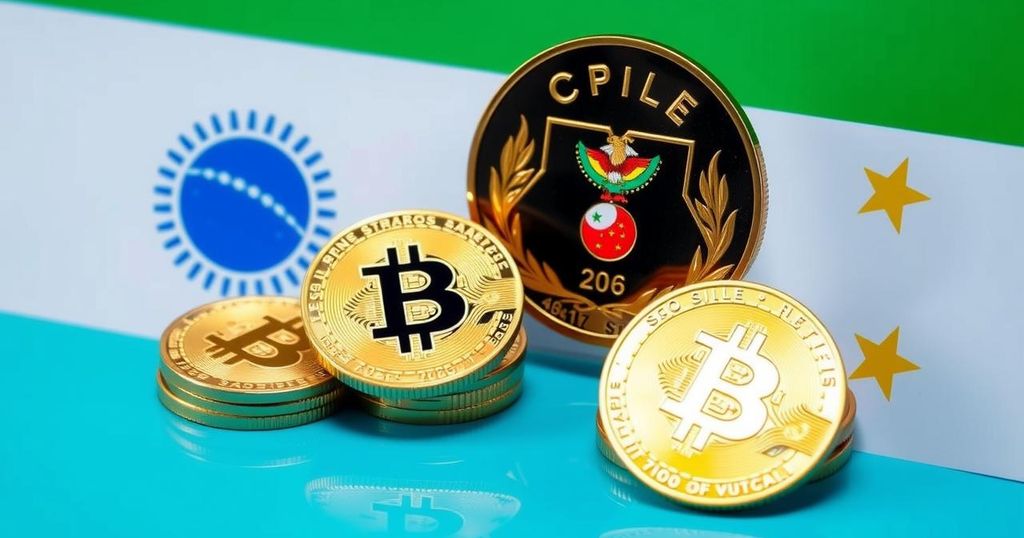Bolivia’s Crypto Boom Contrasts with Chile’s Rejection of Bitcoin
This edition of Latam Insights highlights significant movements in the cryptocurrency sectors of Bolivia and Chile. Bolivia has experienced a surge in crypto transactions following the end of a restrictive ban, while the Central Bank of Chile has rejected cryptocurrencies as reserve assets. Furthermore, Bolivian attorneys have proposed the use of USDT to address economic challenges, linking its value to the national currency.
In the latest edition of Latam Insights, we examine significant developments within the cryptocurrency landscape in Latin America, focusing on Bolivia and Chile. Following the repeal of a sweeping ban on cryptocurrency, Bolivia is witnessing a substantial spike in digital asset transactions, with over 252,000 citizens now engaged in this market. Simultaneously, the Central Bank of Chile has firmly rejected the notion of investing in cryptocurrencies as part of their reserve assets, citing compliance issues with international financial standards. Additionally, Bolivian attorneys have proposed leveraging Tether’s USDT to address economic challenges posed by a fixed dollar exchange rate, suggesting that this could stimulate local economic activities.
In Bolivia, the cryptocurrency market is flourishing post the elimination of a blanket ban that previously limited banks from facilitating crypto transactions. According to the Central Bank of Bolivia’s recent announcement, there was an extraordinary 112% increase in transaction volumes, with over 252,000 individuals now participating in digital asset trading, yielding over $75 million in the last four months alone. This growth underscores the potential of cryptocurrencies to revitalize economic interactions amidst Bolivia’s evolving financial ecosystem.
Conversely, the Central Bank of Chile has categorically stated that cryptocurrencies, including bitcoin, do not meet the necessary criteria to qualify as reserve assets. They are restricted by guidelines from institutions such as the International Monetary Fund, which emphasize the need for security, liquidity, and compliance in maintaining international reserves crucial for economic stability. The bank’s statement reinforces the legal challenges and the lack of compliance that cryptocurrencies face in Chile’s financial framework.
Furthermore, in response to the ongoing dollar shortage, Bolivian attorneys Iver von Borries and Javier Romero Mendizabal have introduced a proposal to consider Tether’s USDT as an index asset for contracts in Bolivia. This initiative seeks to align USDT’s value with the national currency, providing a more adaptable pricing structure for commercial and civil contracts. It aims to alleviate some of the constraints imposed by the fixed dollar exchange rate that has been in place since 2011, potentially unlocking stalled projects and stimulating economic growth in the region.
The cryptocurrency market in Latin America has been evolving rapidly, particularly in countries like Bolivia and Chile, where regulatory environments and economic conditions vary significantly. Bolivia, after lifting its comprehensive ban on cryptocurrencies, has seen a remarkable surge in digital asset adoption and transactions, aiming to harness the benefits of blockchain technology amidst economic instability. In contrast, Chile’s regulatory body has taken a cautious stance, highlighting the importance of compliance with international financial standards in maintaining economic stability. These contrasting approaches reflect broader trends within the region as governments grapple with the implications of cryptocurrencies on their economies.
The developments in Bolivia regarding the surge in cryptocurrency adoption showcase the potential of digital assets to foster economic growth, especially after the lifting of the blanket ban. On the other hand, Chile’s refusal to consider cryptocurrencies for their reserves highlights the regulatory challenges and risks associated with these assets. The proposal to utilize Tether’s USDT in Bolivia may offer a novel solution to counter economic stagnation caused by dollar scarcity. Overall, these insights into the differing trajectories of the Bolivian and Chilean crypto markets provide a compelling look at the rapidly shifting landscape in Latin America.
Original Source: news.bitcoin.com







Post Comment